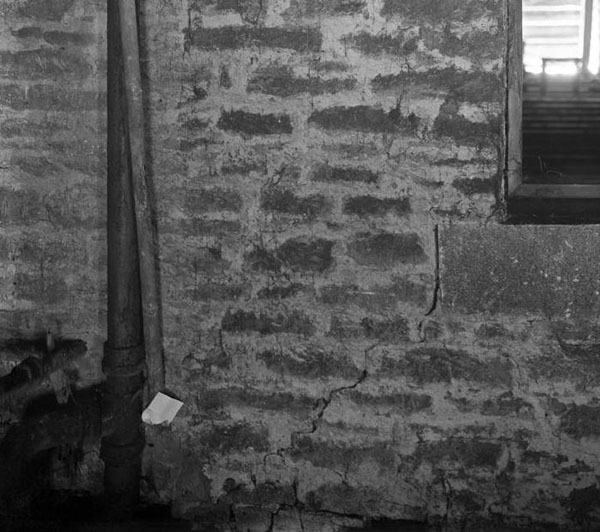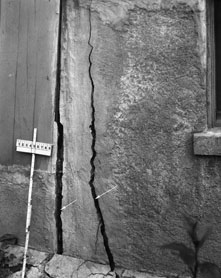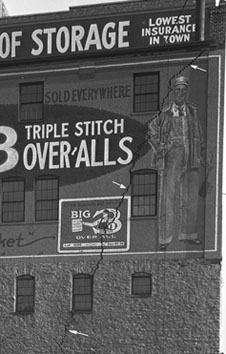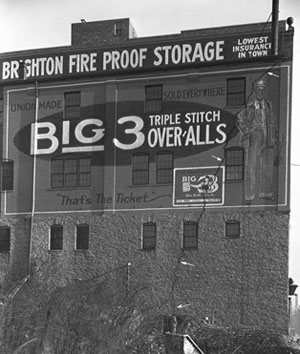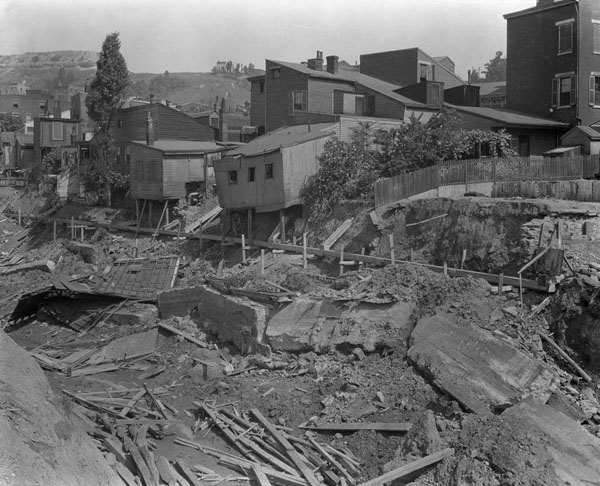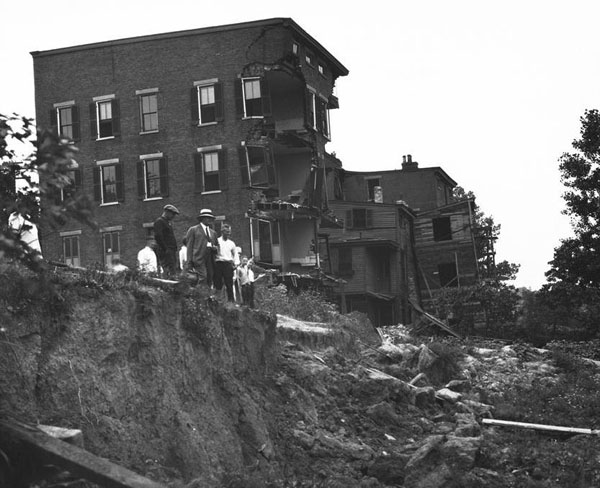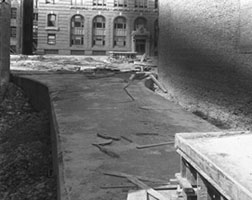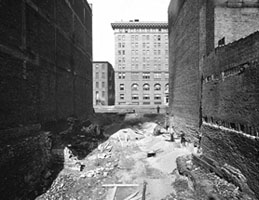By Angela Vanderbilt
Sometimes, in order to build up you must tear down. Sometimes, progress comes with a price. In the case of the Cincinnati subway construction project, that price was the removal of several homes and businesses located along the proposed subway route. The razing of these buildings was due in part to their location, some lay in the direct path of the subway route, but also due to structural damage caused by the construction process.
All buildings were photographed as part of the subway project, including those which sustained damage due to construction of the subway. In some locations, vibration from blasting and digging resulted in cracked walls and ceilings. Below are images from 1921, the beginning of construction, that show cracks in foundations of structures located along the old canal bed, the new Central Parkway. Such photographs would be used to support property owner damage claims made to the city. It is reported that the city paid out over a quarter-million dollars in property damage reparations.
In other areas, such as where the canal had been drained and the walls were left exposed or where tunnels were being dug, landslides occurred when heavy rains fell, causing foundations to shift and portions of houses to slide downhill. The image below, date Aug 10, 1921, contains the caption “Result of last week’s storm, North of Mohawk” and shows a hillside that slid into the empty canal bed after the walls gave way.
Not all buildings that sustained structural damage had to be torn down. In the less severe cases, reparations were made to the homeowners for damages to be repaired. But in other instances, such as these images of homes along McMicken Avenue, the damage was too severe and the ground too unstable to repair, so the structure was torn down.
In other cases, buildings and homes that lay in the path of the proposed route were purchased by the city and then demolished to make room for the subway. In the example below, a building was razed between two other buildings to allow for construction of an arm of the subway.

This project is funded by a grant for $60,669 through the Library Services and Technology Act, administered by the State Library of Ohio.

